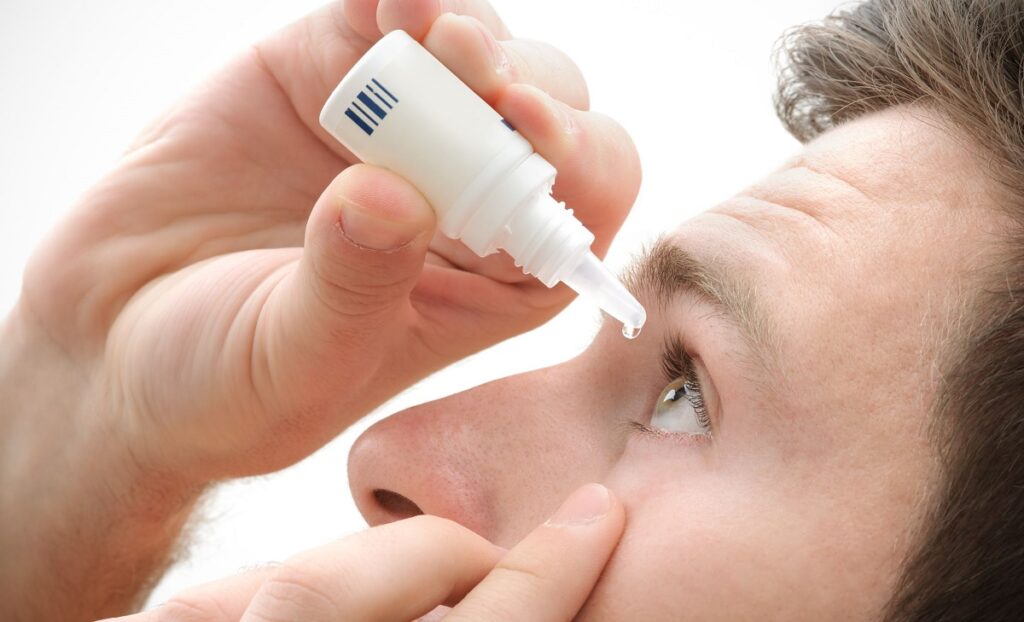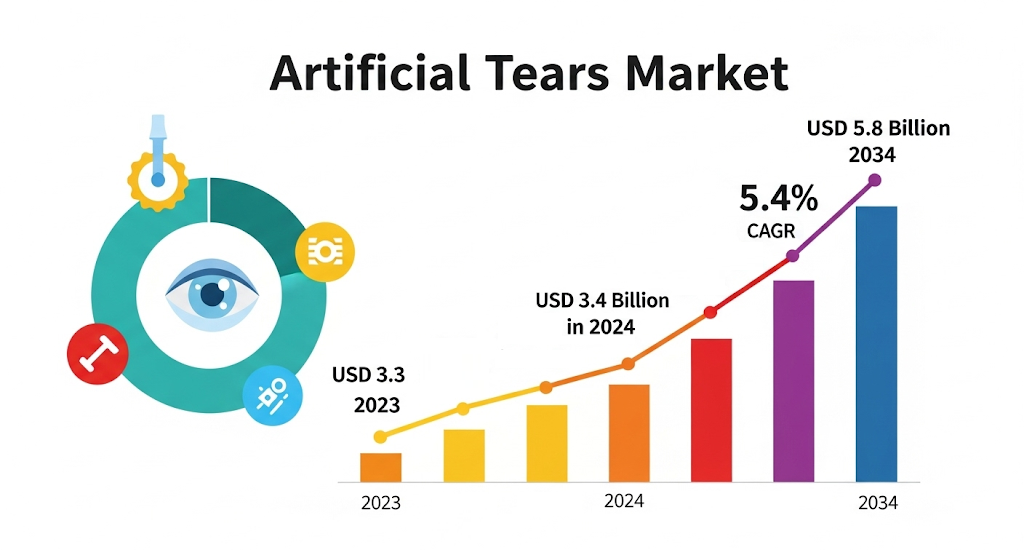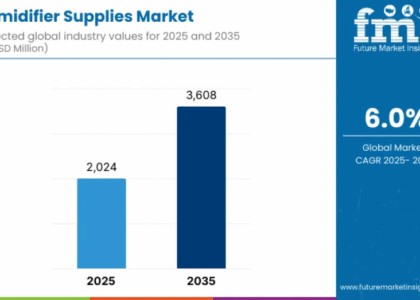The global artificial tears market is expected to register a valuation of USD 3.4 billion in 2024 and further expand at a CAGR of 5.4% to reach a valuation of USD 5.8 billion by 2034. According to Future Market Insights, glycerine tears are leading the market with a share of about 26.7% in 2024 within the global artificial tears market size.
After 15 years covering health trends, one thing is crystal clear: the artificial tears market isn’t just growing—it’s exploding. But that explosion is a symptom of a much bigger problem. According to Future Market Insights, the global artificial tears market is expected to hit nearly US $3 billion in 2024 and soar to almost $4.9 billion by 2033. That’s not just numbers. It’s a global eye health emergency.
Get Sample Report: – https://www.futuremarketinsights.com/reports/sample/rep-gb-18329
Dry eye disease isn’t some minor annoyance anymore. It’s a full-blown epidemic. Screens dominate our lives, air quality deteriorates, and aging populations swell. The result? Millions suffer from burning, stinging, and blurred vision every day. Yet, the market focuses almost entirely on patchwork solutions—artificial tears that treat symptoms, not causes.
This reliance on quick fixes is reckless. We’re trapped in a cycle of slapping drops in our eyes while ignoring what’s truly driving the problem. It’s a band-aid on a bullet wound. Worse, many artificial tears are barely regulated. Patients are vulnerable to contamination and subpar products because the FDA treats these as cosmetics, not drugs. This oversight is unacceptable.
Innovation? It’s frustratingly slow. The industry chases minor tweaks—thicker gels, preservative-free formulas—while ignoring breakthrough treatments that could actually restore eye health. This complacency is costly. We’re selling relief, not cures.
North America leads the market by a wide margin. Why? Because the U.S. population ages, stares at screens, and reaches for drops—often as a reflex rather than a solution. It’s a telling sign. We have the resources, the knowledge, and the technology, but we’re settling for less.

What must change is obvious. First, artificial tears need to be regulated like real medications. Safety cannot be optional. Second, investment must shift towards therapies that treat dry eye at its root—not just soothe symptoms. And finally, public health campaigns must teach prevention, not just symptom management.
If we don’t do this, the artificial tears market will keep ballooning—and so will the suffering. We need real solutions, not just more drops in the bottle.
Explore In-Depth Analysis-Click Here to Access the Report:- https://www.futuremarketinsights.com/reports/artificial-tears-market
Top Segments Studied in the Artificial Tears Market Report
By Product Type:
- Glycerine Tears
- Cellulose Tears
- Oil-based Emulsion Tears
- Polyethylene Glycol-based Tears
- Sodium Hyaluronate Based Artificial Tears
- Propylene Glycol-based Tears
By Dosage Form:
- Solution
- Ointment
- Emulsion
- Gel
- Spray
- Suspensions
By Formulation:
- Preservative Based
- Non-Preservative Based
By Indication:
- Dry Eye Syndrome
- Allergies
- Infections
- UV & Blue Light Protection
- Contact Lens Moisture Retention
- Others
By Distribution channel:
- Retail Pharmacies
- Hospital Pharmacies
- Online Pharmacies
- Ophthalmic Stores
By Region:
- North America
- Latin America
- Europe
- South Asia
- East Asia
- Oceania
- The Middle East and Africa (MEA)






